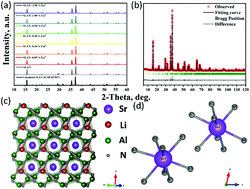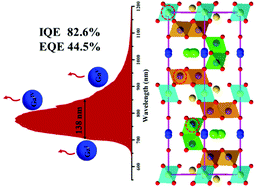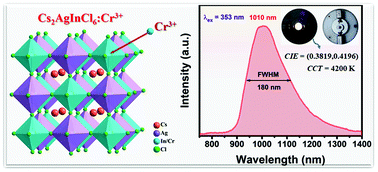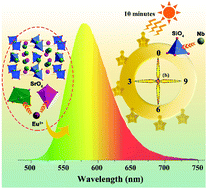Mater. Chem. Front., 2021,5, 333-340. https://doi.org/10.1039/D0QM00488J

Persistent luminescent materials are widely used as night-vision and marking materials in various important fields. Although significant achievements have been made in blue and green persistent luminescent (PersL) materials, the research and development of PersL materials in the warm-color region (550–660 nm) are relatively lacking. Only the orange PersL phosphor Y2O2S:Eu3+,Mg2+,Ti4+ (∼610 nm) and deep red PersL phosphor (Ca1−xSrx)S:Eu2+,Tm3+ (∼650 nm) fulfill the demands of commercial applications. However, sulfide phosphors have poor chemical stability and a relatively short persistent duration time. Herein, we report a series of orange PersL materials, (Sr1−xBax)3SiO5:Eu2+,Nb5+, which exhibit a strong PersL emission band at 550–670 nm and a super-long persistent time of more than 20 h at the 0.32 mcd m−2 threshold value after UV radiation. These new orange PersL materials are compared to the commercial warm-color sulfide PersL phosphor, Y2O2S:Eu,Mg,Ti, with regards to PersL time and brightness, and it is determined that they would have great potential applications airtrack.








